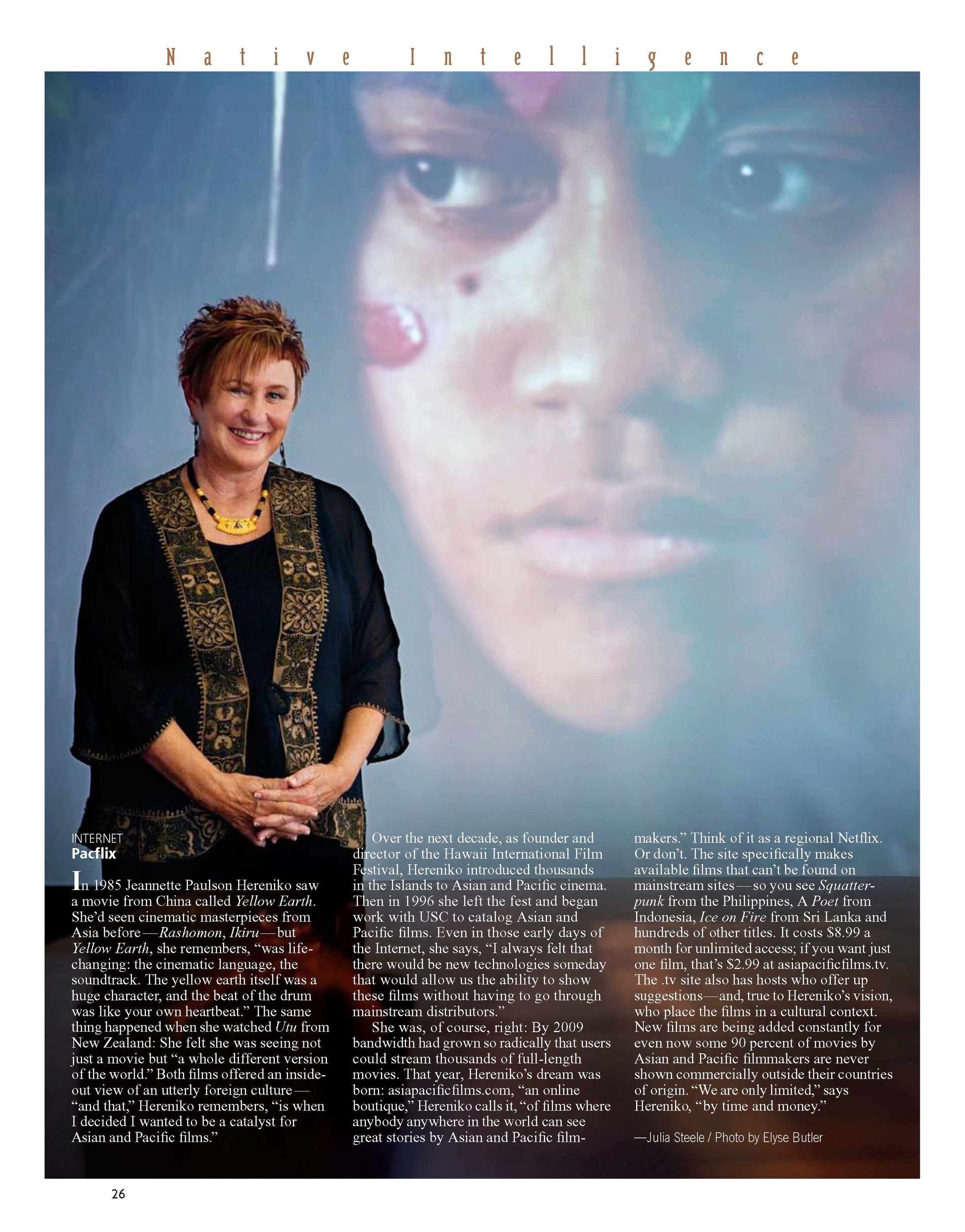In 1985 Jeannette Paulson Hereniko saw a movie from China called Yellow Earth. She’d seen cinematic masterpieces from Asia before—Rashomon, Ikiru—but Yellow Earth, she remembers, “was life-changing: the cinematic language, the soundtrack. The yellow earth itself was a huge character and the beat of the drum was like your own heartbeat.” The same thing happened when she watched Utu from New Zealand: She felt she was seeing not just a movie but “a whole different version of the world.” Both films offered an inside-out view of an utterly foreign culture—“and that,” Hereniko remembers, “is when I decided I wanted to be a catalyst for Asian and Pacific films.”
Over the next decade, as founder and director of the Hawaii International Film Festival, Hereniko introduced thousands in the Islands to Asian and Pacific cinema. Then in 1996 she left the fest and began work with USC to catalog Asian and Pacific films. Even in those early days of the Internet, she says, “I always felt that there would be new technologies someday that would allow us the ability to show these films without having to go through mainstream distributors.”
She was, of course, right: By 2009 bandwidth had grown so radically that a single web site could hold thousands of full-length movies. That year, Hereniko’s dream was born: asiapacificfilms.com, “an online boutique,” Hereniko calls it, “of films where anybody anywhere in the world can see great stories by Asian and Pacific filmmakers.” Think of it as a regional Netflix. Or don’t. The site specifically makes available films that can’t be found on mainstream sites—so you see Squatterpunk from the Philippines, A Poet from Indonesia, Ice on Fire from Sri Lanka and hundreds of other titles. It costs $8.99 a month for unlimited access; if you want just one film, that’s $2.99 at asiapacificfilms.tv. The .tv site also has hosts who offer up suggestions and favorites—and, true to Hereniko’s vision, who help to place the films in their proper cultural context. New films are being added constantly for even now some 90 percent of movies by Asian and Pacific filmmakers are never shown commercially outside their countries of origin. “We are only limited,” says Hereniko, “by time and money.”
